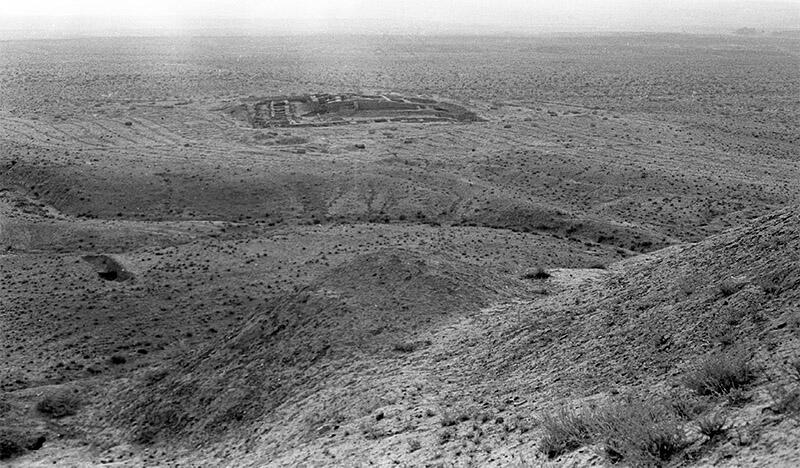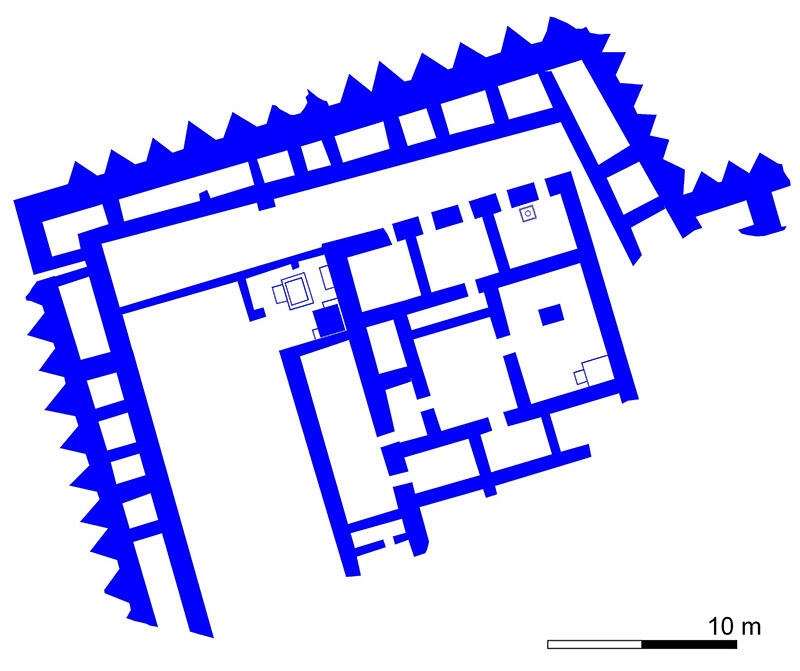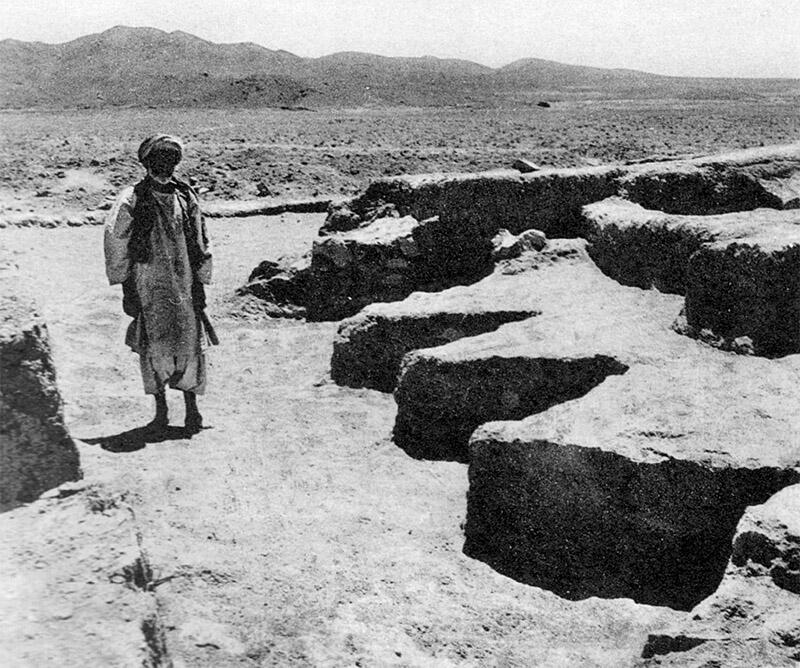The "Palace" was not the only monumental structure at Mundigak. There was also a "Temple" as Casal called it, on the adjacent Mound G and built along the same axis towards the latter part of Period IV [2900-2400 BCE]. It is another monumental building that we really do not know the purpose of.
"Only one construction phase could be determined, and it, like the last rebuilding phase of the ‘palace’, demonstrates a high degree of organisation. No entrance was located, but it might have been in the eroded south wall. A large rectangular structure with its eastern two-thirds divided into small rooms dominates the centre of the ‘temple’. The western part of this building consists of a large open area or courtyard. Centrally located at the north end of this courtyard was a large basin that was considerably elevated above the surrounding living surface. The immediate area was ash-covered and located directly behind the basin was a ceramic drain which extended east–west between the main wall and smaller L-shaped wall associated with the interior building. This smaller wall formed the western boundary of a little chamber interpreted as representing a shrine complex. In the south-east corner was a large square rectangular masonry structure with white plastered benches. A similar bench was found along the east wall. In the centre of the chamber was a large rectangular hearth painted red with a small step on the west side. The rooms to the east were of various sizes and a few of them had interior hearths and other small features. Although there is nothing to indicate that this was a religious structure, it was certainly not a habitation either. Whatever the function, it presents an interesting contrast with the rest of the site," write Jim Shaffer and Cameron Petrie in The Archaeology of Afghanistan (2019 p. 182-83).
Images
1. Mundigak G: view of the ‘temple’ from Mound A in 1966.
2. Plan and section of the Temple.
3. Mundigak G: view of the ‘temple’ showing triangular ‘buttresses (1. and 3. from Allchin, Ball, Hammond The Archaeology of Afghanistan (2019, pp. 183).






